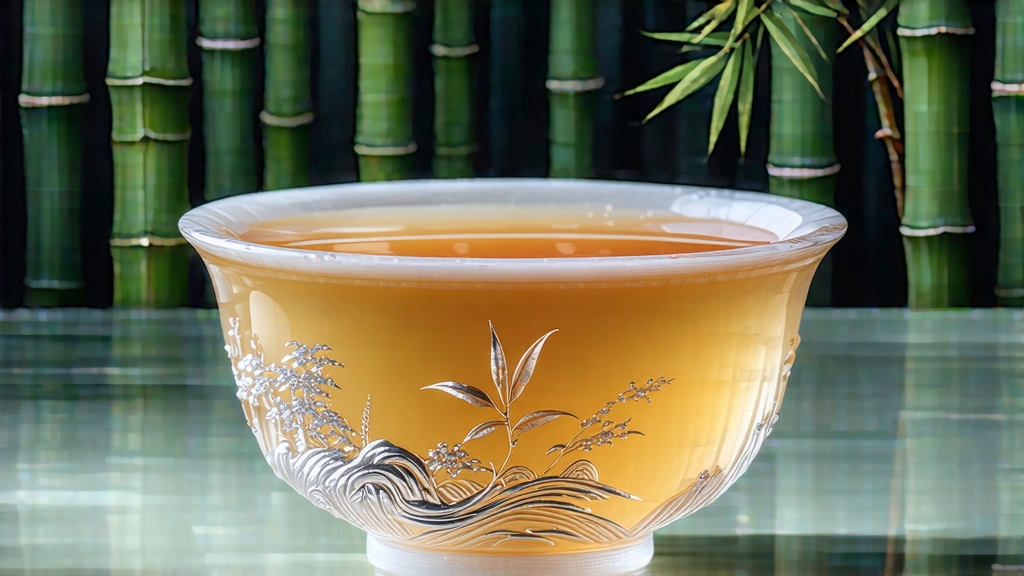
Bai Hao Yin Zhen—“Silver Needle” in the West, “White Hair Silver Needle” in its homeland—occupies the highest tier of China’s white-tea hierarchy. To understand it is to listen to a whispered legend told in cool mountain air, a story that begins in the mist-laden counties of Fuding and Zhenghe along Fujian’s northeastern coast. Here, maritime clouds collide with inland peaks, creating a micro-climate of 90 % humidity and diffused light that tea bushes translate into silvery down and incomparable sweetness. The cultivar behind the elegance is Fuding Da Bai Hao—“Big White Down”—a tea plant selected during the mid-Qing dynasty for its oversized buds sheathed in protective white hairs. Those hairs, botanically termed trichomes, are warehouses of volatile terpenes and amino acids; they scatter light like frost and give the finished tea its pearlescent glow.
History
Although compressed white teas were bartered along the Tea Horse Road as early as the Song dynasty (960-1279), the first written record of loose-leaf Yin Zhen appears in the 1796 county gazette of Fuding, where magistrate Liu Chaoyang praised its “cooling nature” and presented it to the Jiaqing Emperor. By 1857, a devastating frost had killed most seedling nurseries; local monk Shi Huiyong carried surviving cuttings to Taimu Mountain’s Hongxue Temple, establishing the mother garden whose descendants still feed today’s production. International fame arrived in 1891 when a Fuding merchant entered Yin Zhen at the Leipzig International Trade Fair; European medical journals subsequently extolled its antibacterial catechins, and by 1910 it was selling in London for eight times the price of Keemun. During the 1930s civil war, pickers stitched buds into cotton pouches worn under garments to prevent looting—an accidental discovery that led to the “body-withering” technique still used for micro-lots destined for Hong Kong collectors.
Harvest Calendar
True Yin Zhen is picked only in early spring, between Qingming (5 April) and Grain Rain (20 April), when the bud reaches 2.5–3 cm but the first leaf remains sheathed like a closed fan. Experienced pickers use a “twist-pluck” motion that snaps the stem without bruising; buds are dropped into shallow bamboo baskets lined with palm leaves to prevent compression. A full kilogram of finished tea requires roughly 30,000 buds, all plucked before ten o’clock when dew still guards against oxidation. Any later, and rising temperatures activate polyphenol oxidase, turning the down ochre and flattening aroma.
Crafting the Needle
White tea’s minimalism is deceptive; the fewer the steps, the more unforgiving the variables. Once in the factory, buds are spread on bamboo trays 1.5 cm thick and wheeled into a sunroom whose glass roof filters UV to 7000 lux—about the brightness of an overcast beach at noon. For the first 90 minutes they are turned every ten minutes to ensure even wilting; moisture drops from 78 % to 58 %. The trays then move to an indoor withering corridor where 26 °C air, perfumed by mountain pine, is circulated at 0.8 m s⁻¹. Here the tea “sleeps” for 36–48 hours, entering a mysterious enzymatic dance: lipids break into floral aldehydes, proteins unwind into sweet amino acids, and caffeine gently binds with tannins, softening bitterness. When the bud’s moisture reaches 8–10 %, a master judged by touch—flexible but snapping cleanly—ends the process. No rolling, no pan-firing, no baking; only a final desiccation at 40 °C for twenty minutes locks in the fragrance. The result is a needle that feels like dried pine needle yet smells of ripe honeydew and wet stone.
Grading & Terroir
Purists recognize three micro-origins. Taimu Mountain buds carry alpine air and orchid notes; Guan Yang village yields broader needles with marzipan sweetness; Zhenghe’s higher latitude produces slimmer spears reminiscent of wild lily. Top-grade lots exhibit “three whites and one green”—bud, stem, and underside of the unopened leaf all silver, while the upper leaf surface maintains a jade hue